
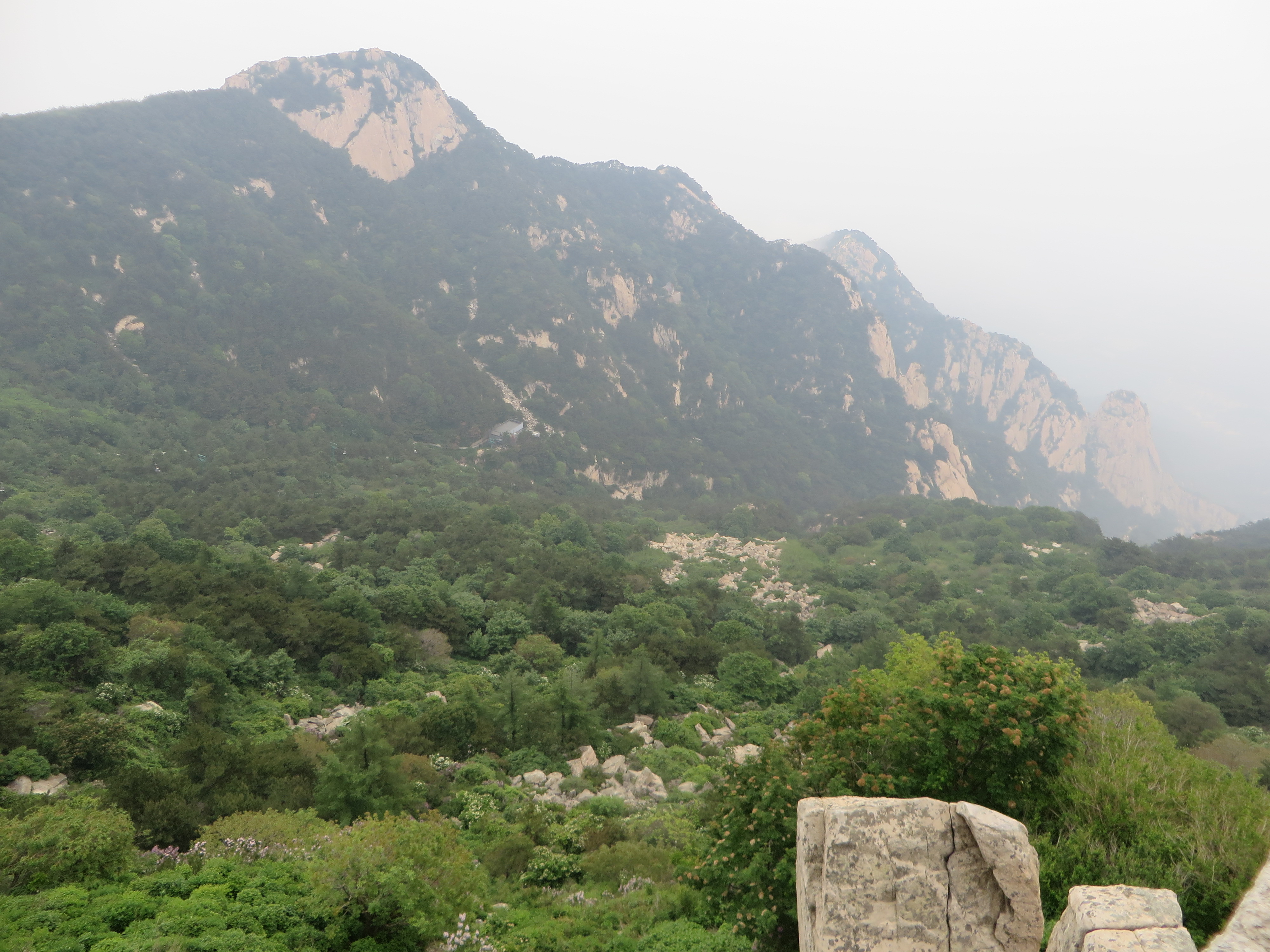
For those of you who know me, I am not much of an outdoor girl. The trip to China has challenged me in many ways. I climbed part of the Great Wall of China last week and this past weekend the nurses from UMass Lowell “climbed” one of the most famous mountains in China, The Tai Mountain. I use the word “climb” with some hesitation. On the advice of our wonderful guide Tony we decided to do a smaller initial climb and then opt to use the gondola to get us close the peak. We still had a fair amount of climbing after the gondola.

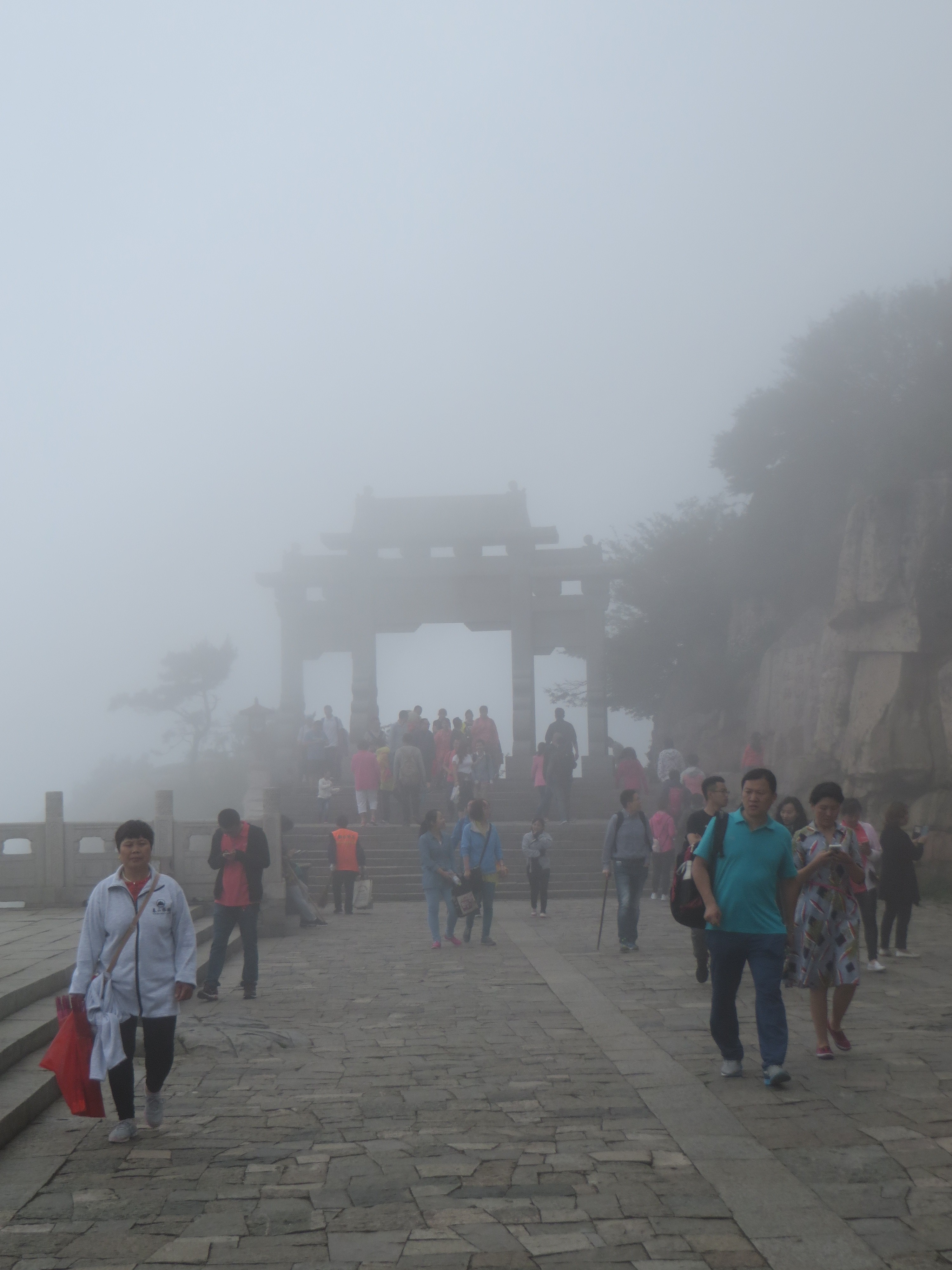
As the weather changed it appeared that we were climbing into the sky. We made it safely to the peak for a round of photos ( along with hundreds of fellow Chinese climbers). This mountain is very significant in Chinese history. The recorded history goes back about 3,000 years and it has been an important pilgrimage destination for emperors to worship the gods. It is a UNESCO /World Heritage Center . On the mountain there are 12 historically recorded imperial ceremonies in homage to Heaven and Earth, about 1,800 stone tablets and inscriptions, and 22 temples .

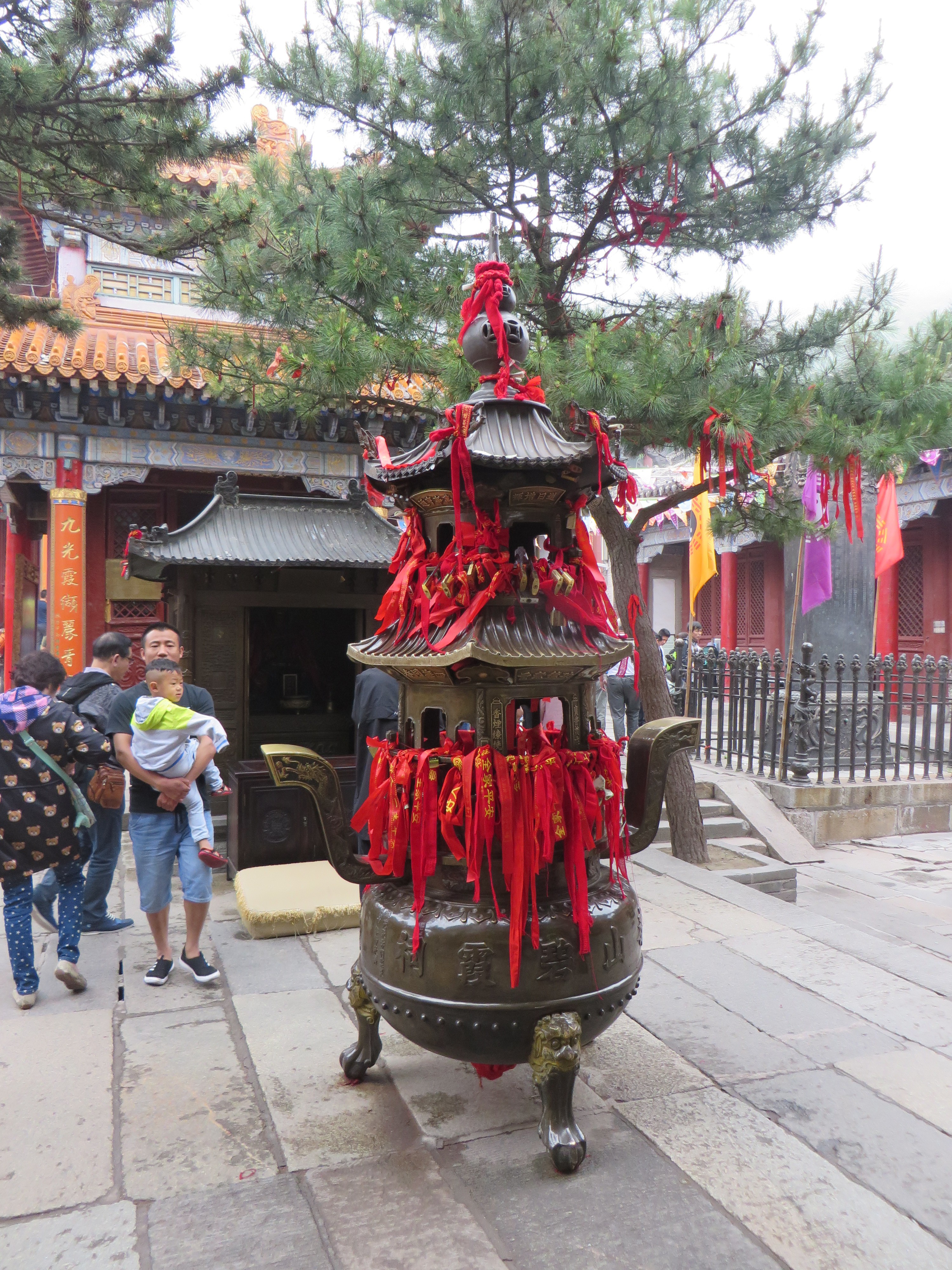
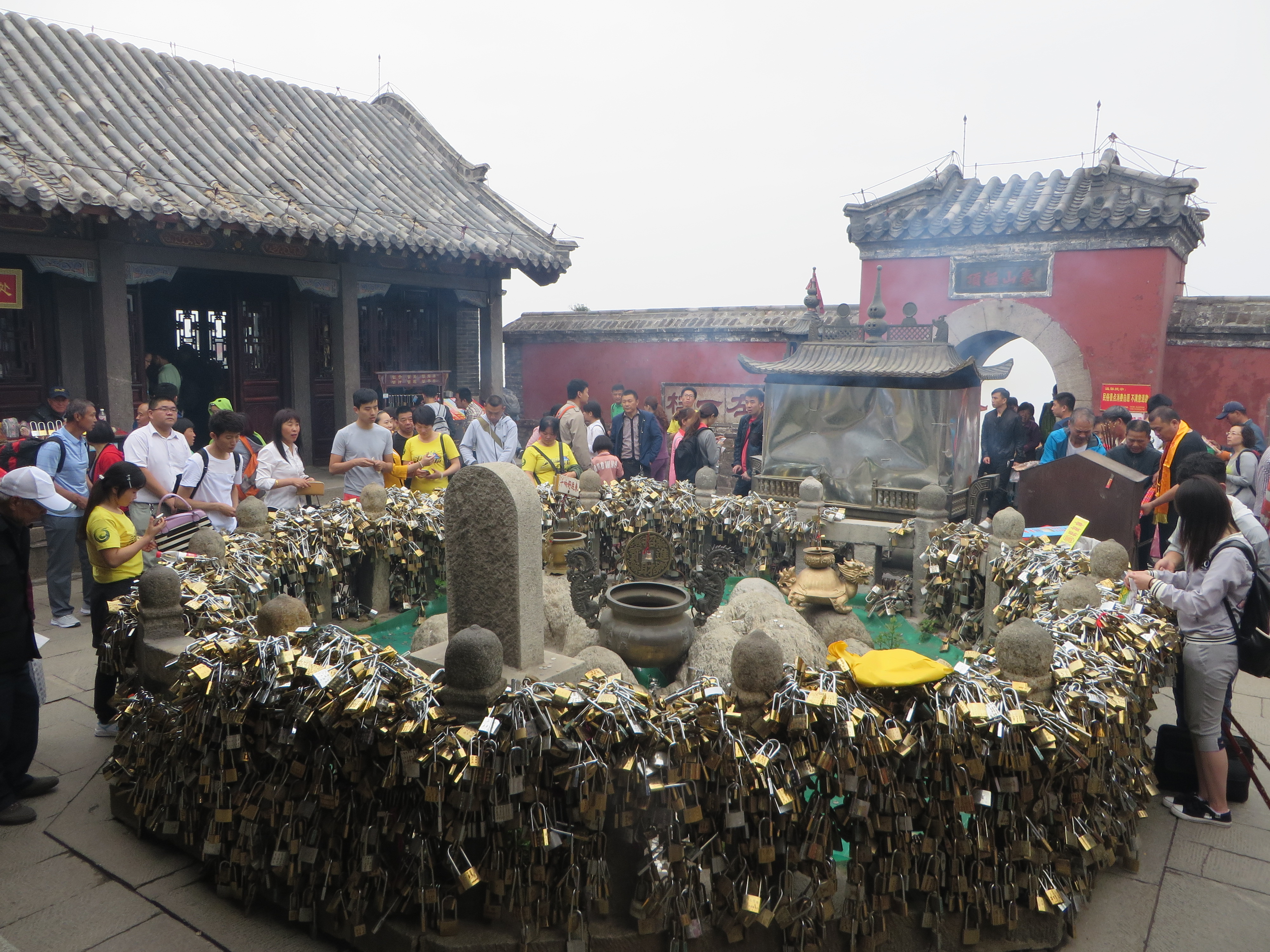
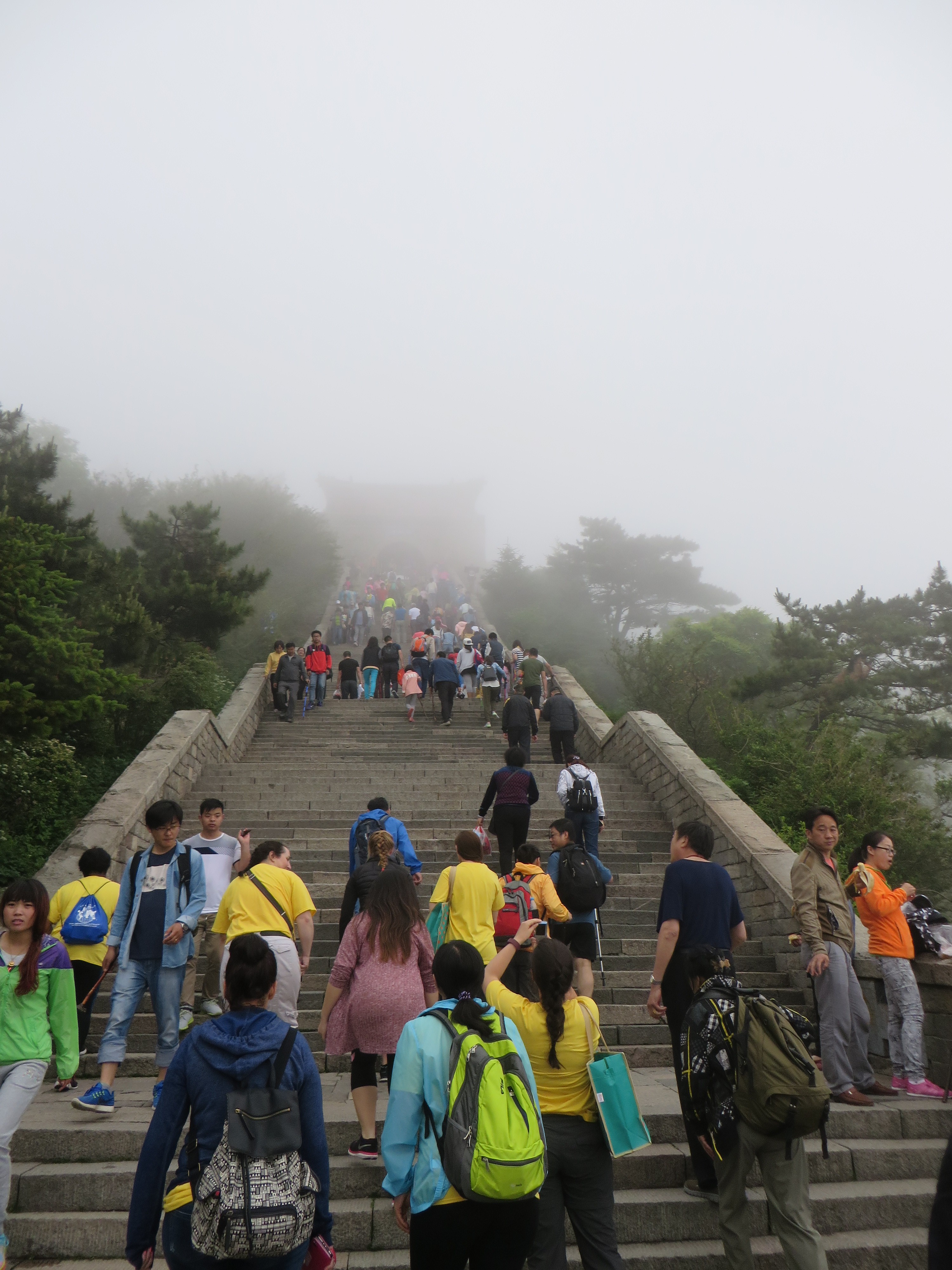
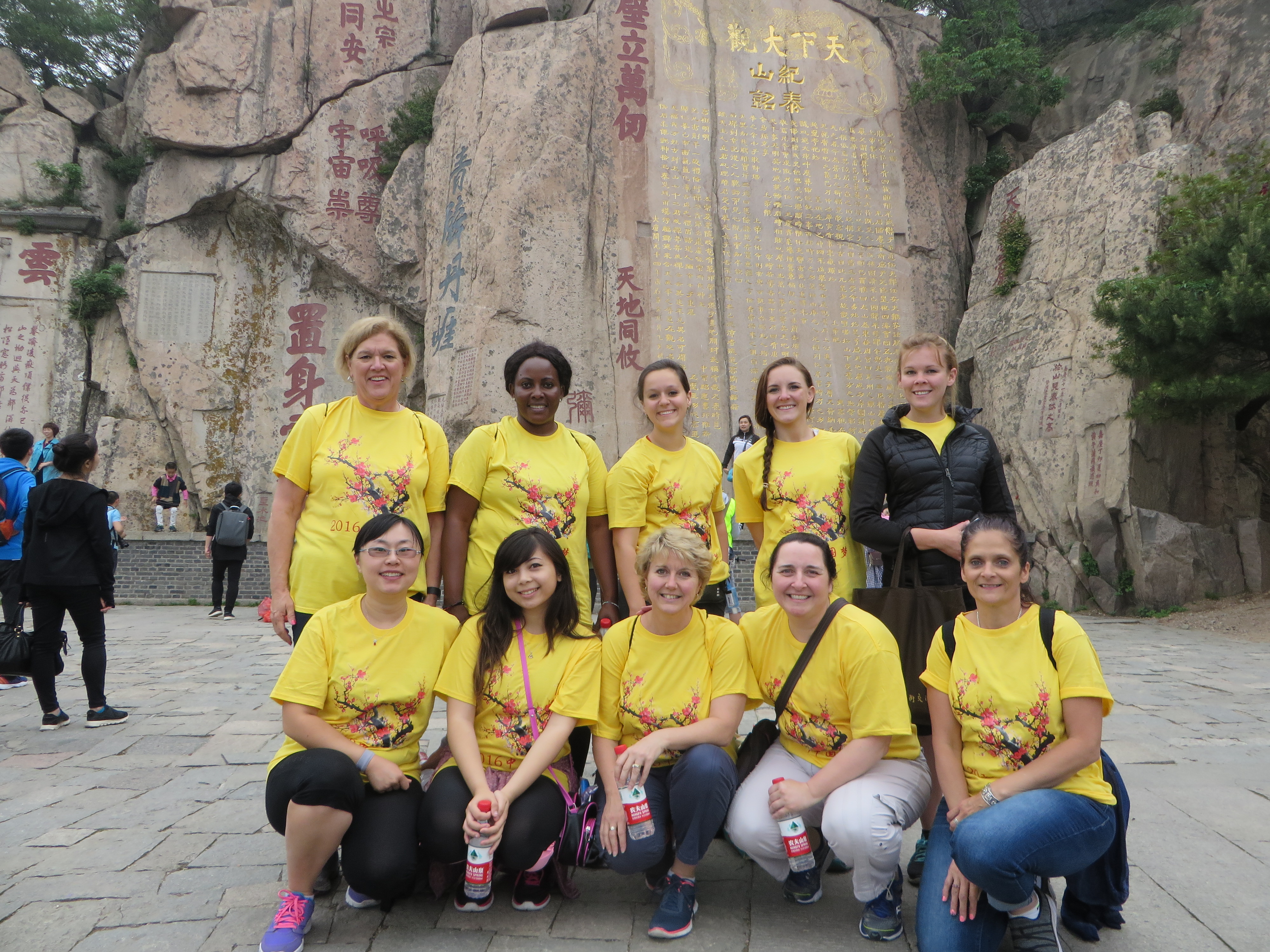
The mountain is about 5,069 feet tall and has over 6,600 steps to climb ( and it felt like we climbed every one of those steps but I suspect we only climbed about 1500 steps). For more information about this historical site, here is a website link. http://whc.unesco.org/en/list/437
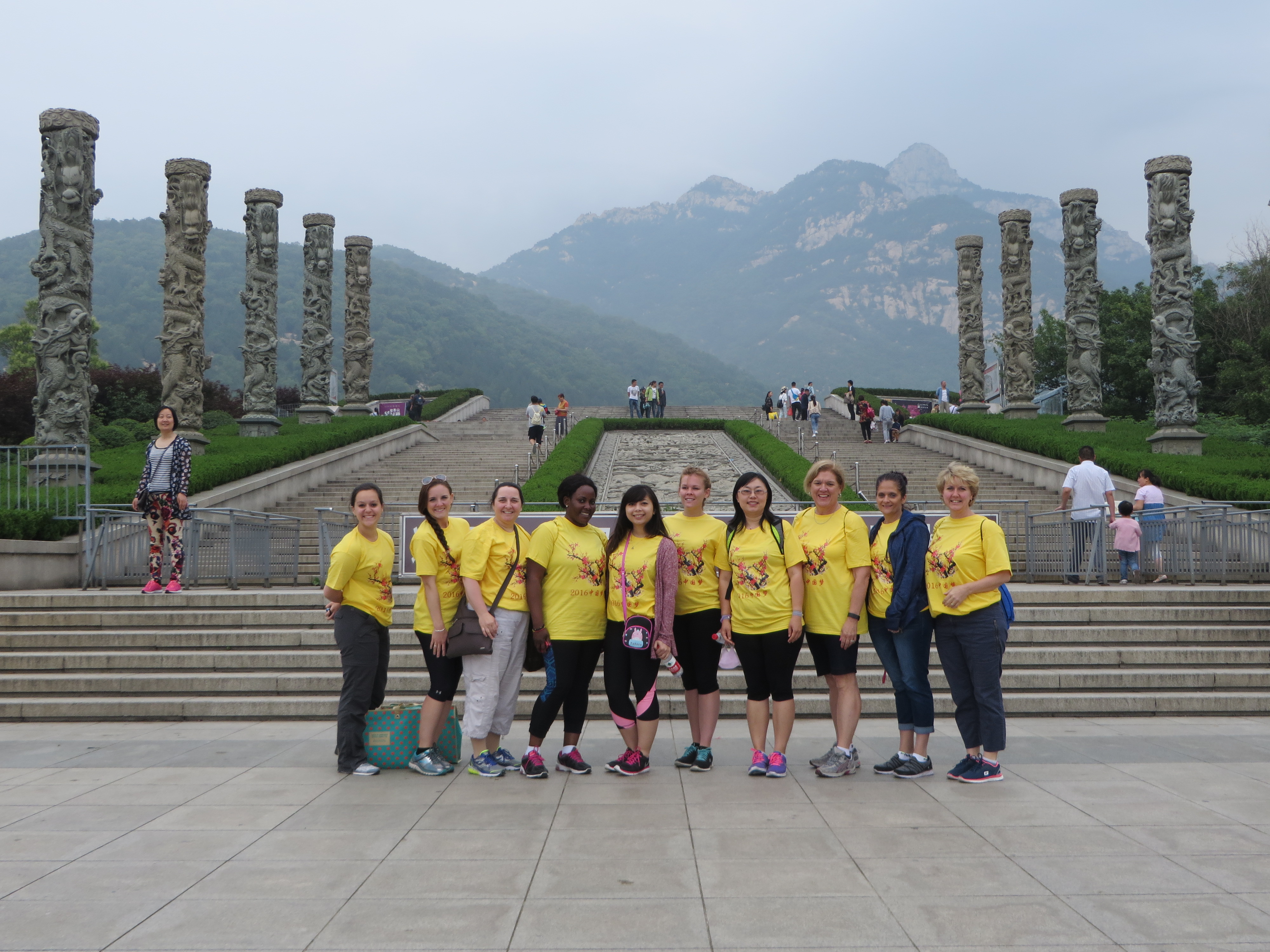
Our group at the end of our climb. Our Tshirts have picture of the national flower and the Chinese words “China Dream- 2016”
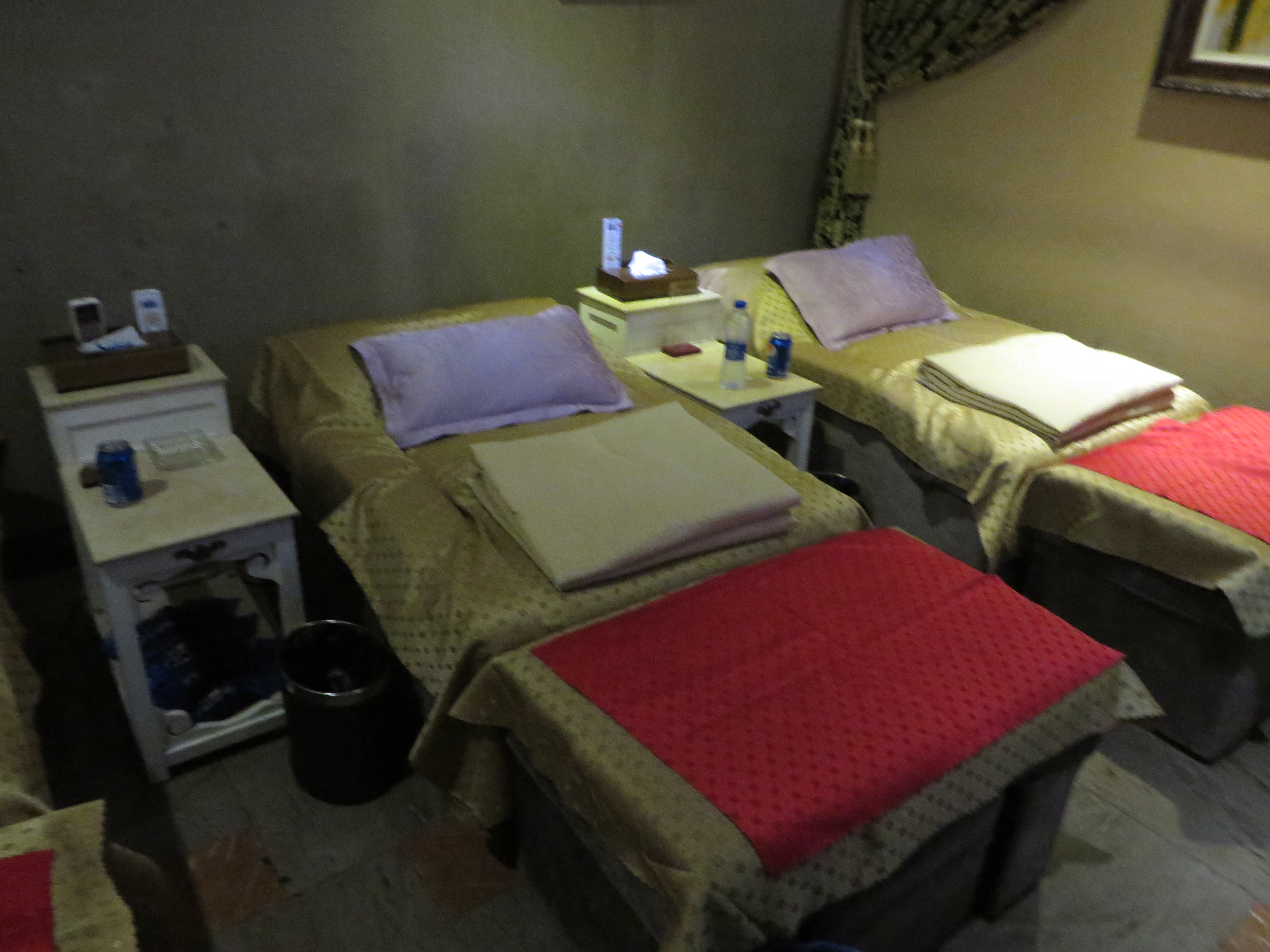
At the end of the day we got a foot massage … actually a bit painful but the therapist did not understand “ouch”
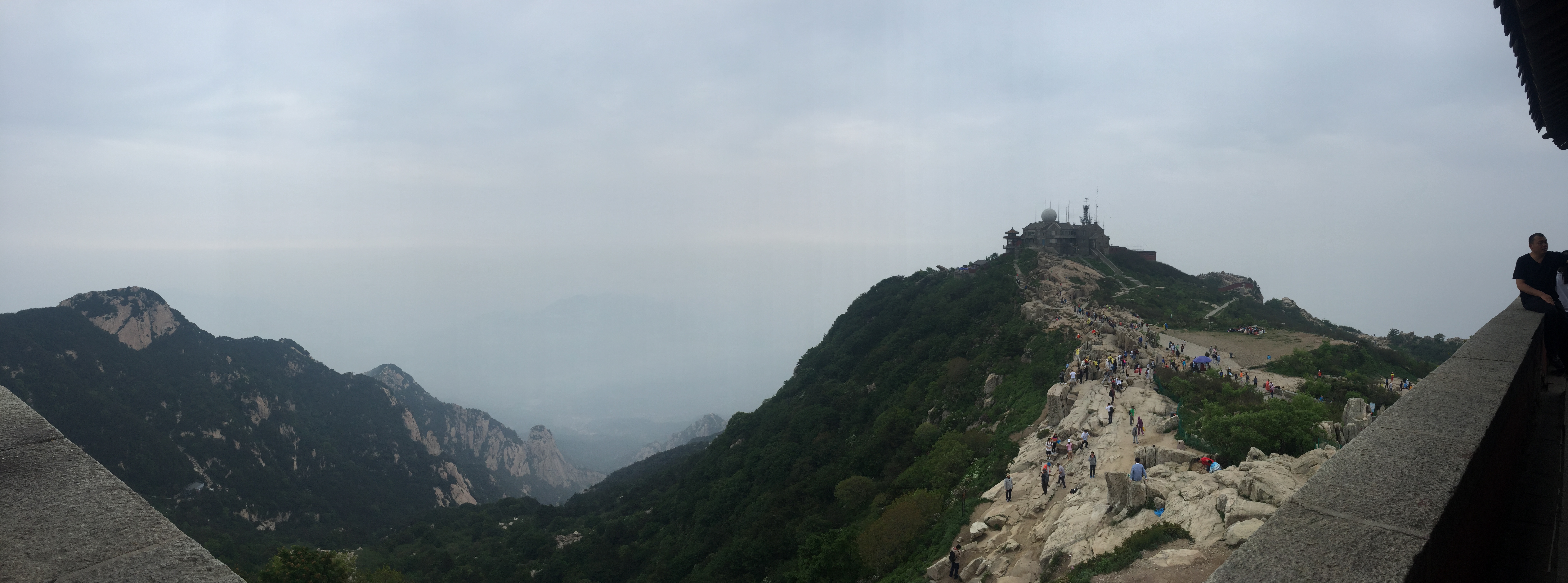
View from close to the top of Jade Emperor Peak

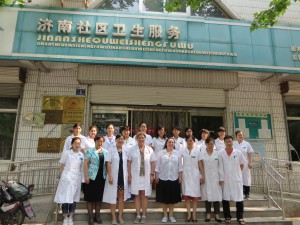 Today we are in my comfort zone. We went to visit a community health center. It is one of 8 centers that are affiliated with a hospital. The woman in the turquoise jacket is the nurse who is the director of this location as well as the overall director of the other centers. She was warm and welcoming and quite curious as to the status of our community health centers and home care in the US. This is where I have the most interest and experience. I found that although the location looked different from home there were many similarities. They provide very holistic and comprehensive care to the people of their community. There are multiple aspects of care that is provided from prenatal care to well child care, elder care on site and also home visits, post-partum care home visits, rehab services, lab and EKG, and of course a multitude of traditional Chinese therapies that we have seen in most of our visits. The nurses and doctors were overwhelmingly friendly to us despite our inability to communicate unless with interpreters. Every UML nurse was allowed to go and observe a home visit with a doctor. That was interesting to me in that the doctors performed a significant number of home visits. It was noted by all the UML nurses that the assessments and interventions performed by the doctors are all within the the realm of nursing in the US and that we were surprised that a nurse was not doing that postpartum check or the evaluation of the elderly patient with hypertension. Maybe it was that the doctor wanted to do the visit with us or maybe it was the standard of care for these patients to receive their care from a physician for these type of visits. There was much interest in the number of visits made to the home by either the nurse or doctor. We have been told it can be up to 14-15 visits per day but many of those visits are for quick immunizations. Speaking of immunizations they proudly report about a 100% vaccination rate for their pediatric population and were quite surprise that we were impressed with that number. We didn’t get into the whole controversy over vaccines in the US but we did state that some parents refuse vaccinations. All vaccines that are made in this country are free to patients but any vaccine made out of the country there is a small cost. Another interesting recent development in China ( effective June 1) is that the health care facilities have to provide medication at zero profit. Which means that if they purchase or acquire the drug at a certain cost then they cannot upcharge the fee to the patient. This is a new regulation in the city of Jinan ( all the health care facilities). We believe it is a pilot regulation and will be implemented in the future in the province of Shandong and possibly country wide. Now wouldn’t that be an interesting tactic to address the cost of medicine in the US ( we would have to get the pharmaceutical companies to be realistic with their costs as well).
Today we are in my comfort zone. We went to visit a community health center. It is one of 8 centers that are affiliated with a hospital. The woman in the turquoise jacket is the nurse who is the director of this location as well as the overall director of the other centers. She was warm and welcoming and quite curious as to the status of our community health centers and home care in the US. This is where I have the most interest and experience. I found that although the location looked different from home there were many similarities. They provide very holistic and comprehensive care to the people of their community. There are multiple aspects of care that is provided from prenatal care to well child care, elder care on site and also home visits, post-partum care home visits, rehab services, lab and EKG, and of course a multitude of traditional Chinese therapies that we have seen in most of our visits. The nurses and doctors were overwhelmingly friendly to us despite our inability to communicate unless with interpreters. Every UML nurse was allowed to go and observe a home visit with a doctor. That was interesting to me in that the doctors performed a significant number of home visits. It was noted by all the UML nurses that the assessments and interventions performed by the doctors are all within the the realm of nursing in the US and that we were surprised that a nurse was not doing that postpartum check or the evaluation of the elderly patient with hypertension. Maybe it was that the doctor wanted to do the visit with us or maybe it was the standard of care for these patients to receive their care from a physician for these type of visits. There was much interest in the number of visits made to the home by either the nurse or doctor. We have been told it can be up to 14-15 visits per day but many of those visits are for quick immunizations. Speaking of immunizations they proudly report about a 100% vaccination rate for their pediatric population and were quite surprise that we were impressed with that number. We didn’t get into the whole controversy over vaccines in the US but we did state that some parents refuse vaccinations. All vaccines that are made in this country are free to patients but any vaccine made out of the country there is a small cost. Another interesting recent development in China ( effective June 1) is that the health care facilities have to provide medication at zero profit. Which means that if they purchase or acquire the drug at a certain cost then they cannot upcharge the fee to the patient. This is a new regulation in the city of Jinan ( all the health care facilities). We believe it is a pilot regulation and will be implemented in the future in the province of Shandong and possibly country wide. Now wouldn’t that be an interesting tactic to address the cost of medicine in the US ( we would have to get the pharmaceutical companies to be realistic with their costs as well).
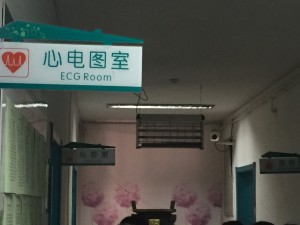
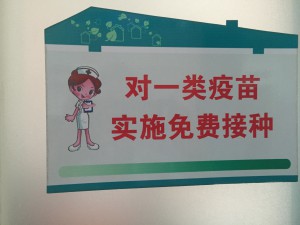


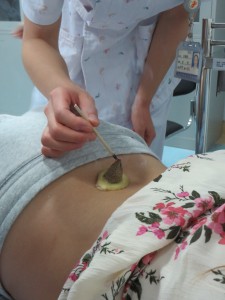

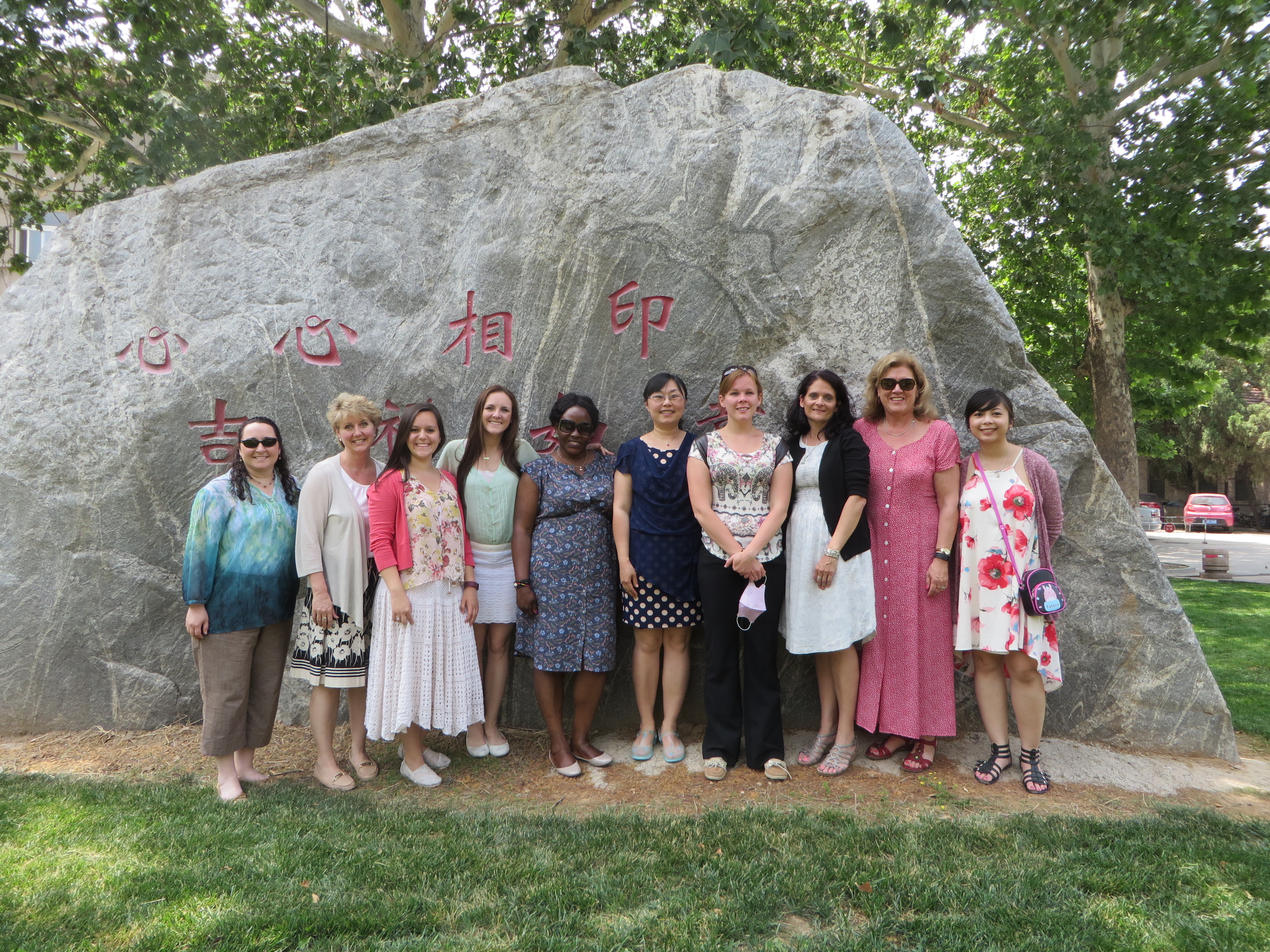
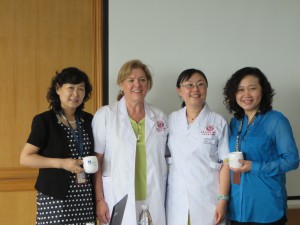
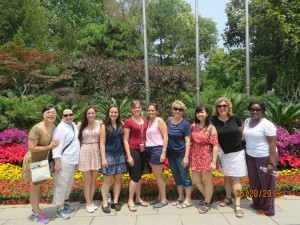
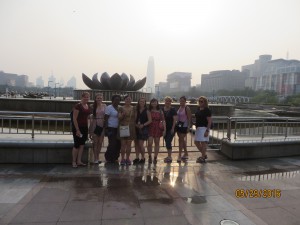
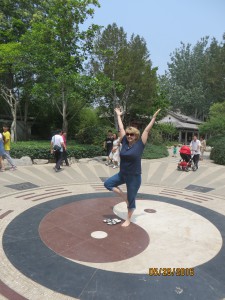

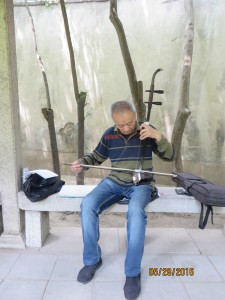
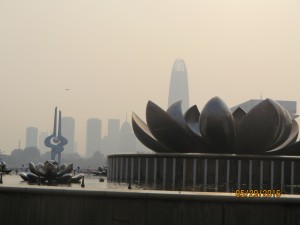
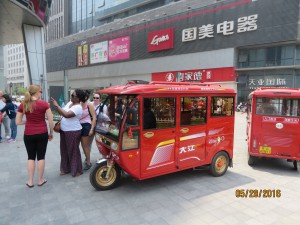
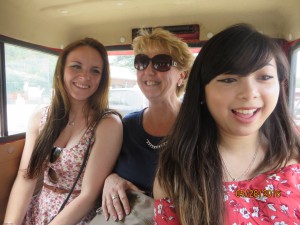

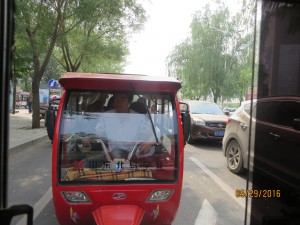
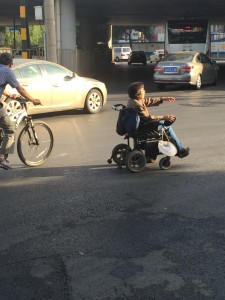
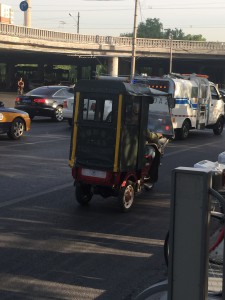
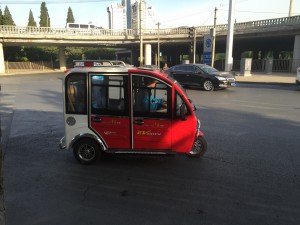
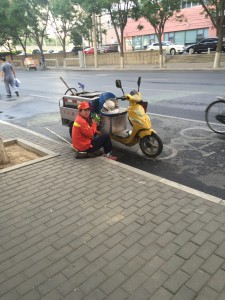
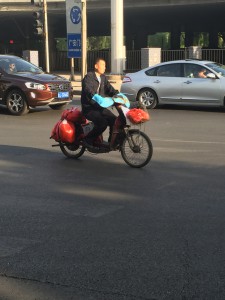
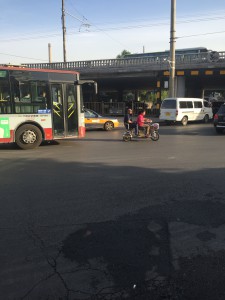
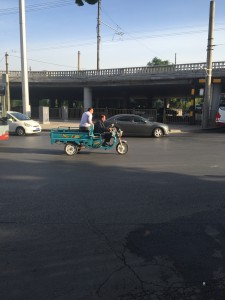 My fellow travelers are going to do a BLOG entry about some of our adventures today. For those of you who have read my UML BLOGs before I like to write about my observations. Well, this morning I got up early and went for a walk ( totally forgetting that I was scheduled to climb the Great Wall of China later today.. Needless to say my Fitbit recorded lots of steps). What I wanted to share with you all today was my early observations about transportation in and around the city. I am fascinated to explore the patterns of society in new places for me. Today was no exception. Beijing at first glance could be like any other big US city. Filled with skyscrapers, paved roads, bridges, cars, buses and people all moving to make it to home or work. The mode of transportation just looks a bit different in some cases. Yes, they have the assortment of shiny new cars like Kia, Toyota, Hyndai and an occasional American car but it is the movement of the non-car people that have me mesmerized this morning. I am told that there is a lottery for license plates in China due to the overcrowding of the streets so that even if you can afford a car you might not be able to register it and drive it unless you have a license plate. So many people resort to other “wheels” to get around. I saw so many different vehicles and regular people just trying to get to work. A sanitation worker near her small scooter wearing her face mask to protect her against the air pollution and sun. Mother’s riding motorized scooters with their child eating breakfast on the back of the scooter ( no helmet), peddle bikes with 2 or more people riding to work, small “toy” vans barely big enough for a driver but a passenger in the back. A man on a motorized bike with his wife in the back, another man in a motorized scooter with 2 other workers in heading to work. I even saw a women in a motorized wheelchair playing “chicken” with big buses and cars in a busy rotary. Many of the motorcycle drivers wear mitts on their hands that look like oven mitts. They are for warmth in the winter and in the summer they protect the hands from sun. Interesting that they are worried about sun damage but not worried about head injuries.
My fellow travelers are going to do a BLOG entry about some of our adventures today. For those of you who have read my UML BLOGs before I like to write about my observations. Well, this morning I got up early and went for a walk ( totally forgetting that I was scheduled to climb the Great Wall of China later today.. Needless to say my Fitbit recorded lots of steps). What I wanted to share with you all today was my early observations about transportation in and around the city. I am fascinated to explore the patterns of society in new places for me. Today was no exception. Beijing at first glance could be like any other big US city. Filled with skyscrapers, paved roads, bridges, cars, buses and people all moving to make it to home or work. The mode of transportation just looks a bit different in some cases. Yes, they have the assortment of shiny new cars like Kia, Toyota, Hyndai and an occasional American car but it is the movement of the non-car people that have me mesmerized this morning. I am told that there is a lottery for license plates in China due to the overcrowding of the streets so that even if you can afford a car you might not be able to register it and drive it unless you have a license plate. So many people resort to other “wheels” to get around. I saw so many different vehicles and regular people just trying to get to work. A sanitation worker near her small scooter wearing her face mask to protect her against the air pollution and sun. Mother’s riding motorized scooters with their child eating breakfast on the back of the scooter ( no helmet), peddle bikes with 2 or more people riding to work, small “toy” vans barely big enough for a driver but a passenger in the back. A man on a motorized bike with his wife in the back, another man in a motorized scooter with 2 other workers in heading to work. I even saw a women in a motorized wheelchair playing “chicken” with big buses and cars in a busy rotary. Many of the motorcycle drivers wear mitts on their hands that look like oven mitts. They are for warmth in the winter and in the summer they protect the hands from sun. Interesting that they are worried about sun damage but not worried about head injuries.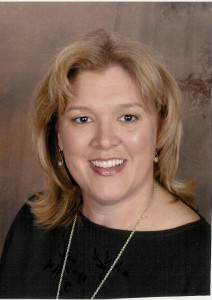 The Spring semester is over but the summer semester, Global Health Experience, is about to begin. Our journey starts on May 24, 2016 with an early flight to Toronto and then on to Beijing. We arrive in Beijing the next afternoon around 4 pm.
The Spring semester is over but the summer semester, Global Health Experience, is about to begin. Our journey starts on May 24, 2016 with an early flight to Toronto and then on to Beijing. We arrive in Beijing the next afternoon around 4 pm.